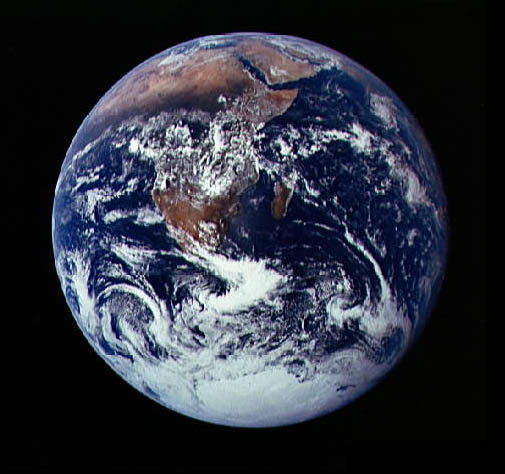

Our planet in the solar system with the following traits:
Size: 7,926 miles wide (12,756 km)
Location in Solar System: 3rd from the sun
Distance from Sun: 93 million miles (150 million km)
Year (length of revolution around sun): 365 days
Day (length of rotation): 24 hours
Landscape: Earth's crust is made up of shifting tectonic plates that move over a thick, rocky mantle. 75% of it is covered with water. It is tilted on its axis creating seasons. It has active volcanoes and is the only planet with life. It's atmosphere is made up of nitrogen and oxygen. The range of temperatures around the planet average 57.2°F (14°C)
Moons: 1 moon
See Solar System poster, chart, worksheets, matching and read and react quizzes in Science Activities and Illustrated Science Mini-Posters.
When you research information you must cite the reference. Citing for websites is different from citing from books, magazines and periodicals. The style of citing shown here is from the MLA Style Citations (Modern Language Association).
When citing a WEBSITE the general format is as follows.
Author Last Name, First Name(s). "Title: Subtitle of Part of Web Page, if appropriate." Title: Subtitle: Section of Page if appropriate. Sponsoring/Publishing Agency, If Given. Additional significant descriptive information. Date of Electronic Publication or other Date, such as Last Updated. Day Month Year of access < URL >.
Amsel, Sheri. "Earth" Exploring Nature Educational Resource ©2005-2024. December 13, 2024
< http://www.exploringnature.org/db/view/Earth >
